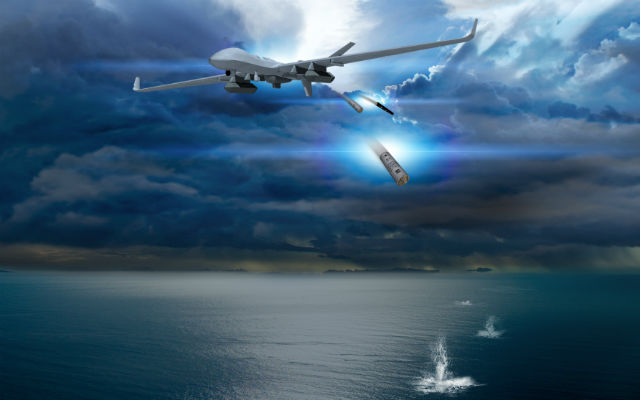ASW Drones - An Update
One of the areas of naval warfare with the most potential for transformation by unmanned systems is submarine hunting. In general, anti-submarine warfare (or ASW) requires persistently deployed sensors at various water depths in order to detect, track, and identify submarines so that a targeting solution can be developed and weapons deployed against the subs. This detect-to-engage sequence can take weeks to develop or it can occur very rapidly. Additionally, ASW is a multi-domain discipline, meaning assets are deployed above, on the surface of, and under the sea. Currently, ASW sensors are deployed by aircraft (usually periscope detecting radars, magnetic anomaly detectors, and sonobuoys) and surface ships (hull mounted, towed array, or variable depth sonars).
As one can imagine, coordinating these assets is a very complicated activity. At some point in the future, increased levels of autonomy in unmanned systems will reduce to a degree the human coordination required in ASW. In the near term, probably the most important factor that unmanned systems will bring to the fight is their sheer number and persistence.
A single mission platform for hunting hard to detect diesel boats, DARPA's Anti-Submarine Warfare (ASW) Continuous Trail Unmanned Vessel (ACTUV) program, or "Sea Hunter" prototype continues its development. The major challenge for USVs is autonomous navigation and obstacle avoidance. And though they offer long dwell time for ASW and the ability to tow acoustic detection arrays at various depths of the water column, their speed is limited.
The plug and play nature of today's unmanned system will facilitate the introduction of many types of sensors in greater quantities on the ASW battlefield. In 2014, Ultra Electronics USSI announced the integration of its Sentinel Passive Acoustic Sensor into Liquid Robotics Wave Glider unmanned surface vessel. According to a press release from the company, the "sensor/software suite is designed to acoustically detect, track and form contact reports on waterborne targets that are transmitted to a command and control node on shore, ship or aircraft platform."


General Atomics, maker of the Predator and Reaper UAVs that proliferate today's battlefields, has recently introduced capabilities that could makes this versatile aircraft a viable ASW platform. A maritime version of the MQ-9B, the Guardian, already offers extended range and a multi-mode active electronically scanned radar which could be useful in detecting a submarine cruising at periscope depth. Now, General Atomics has proposed a Guardian-variant to complement the Royal Navy's manned ASW maritime patrol aircraft. The UAV will be capable of deploying sonobuoys produced by Ultra Electronics and sending their data back to a control station via satellite link. Ground-based sonobuoy-launching UAVs will augment ASW assets deployed at sea and give naval commanders greater flexibility in deploying submarine-detecting sensors at long distances from their operating bases.
As one can imagine, coordinating these assets is a very complicated activity. At some point in the future, increased levels of autonomy in unmanned systems will reduce to a degree the human coordination required in ASW. In the near term, probably the most important factor that unmanned systems will bring to the fight is their sheer number and persistence.
 |
| MQ-9B Launches Sonobuoys (artist concept by General Atomics) |
The plug and play nature of today's unmanned system will facilitate the introduction of many types of sensors in greater quantities on the ASW battlefield. In 2014, Ultra Electronics USSI announced the integration of its Sentinel Passive Acoustic Sensor into Liquid Robotics Wave Glider unmanned surface vessel. According to a press release from the company, the "sensor/software suite is designed to acoustically detect, track and form contact reports on waterborne targets that are transmitted to a command and control node on shore, ship or aircraft platform."

General Atomics, maker of the Predator and Reaper UAVs that proliferate today's battlefields, has recently introduced capabilities that could makes this versatile aircraft a viable ASW platform. A maritime version of the MQ-9B, the Guardian, already offers extended range and a multi-mode active electronically scanned radar which could be useful in detecting a submarine cruising at periscope depth. Now, General Atomics has proposed a Guardian-variant to complement the Royal Navy's manned ASW maritime patrol aircraft. The UAV will be capable of deploying sonobuoys produced by Ultra Electronics and sending their data back to a control station via satellite link. Ground-based sonobuoy-launching UAVs will augment ASW assets deployed at sea and give naval commanders greater flexibility in deploying submarine-detecting sensors at long distances from their operating bases.

Comments
Post a Comment